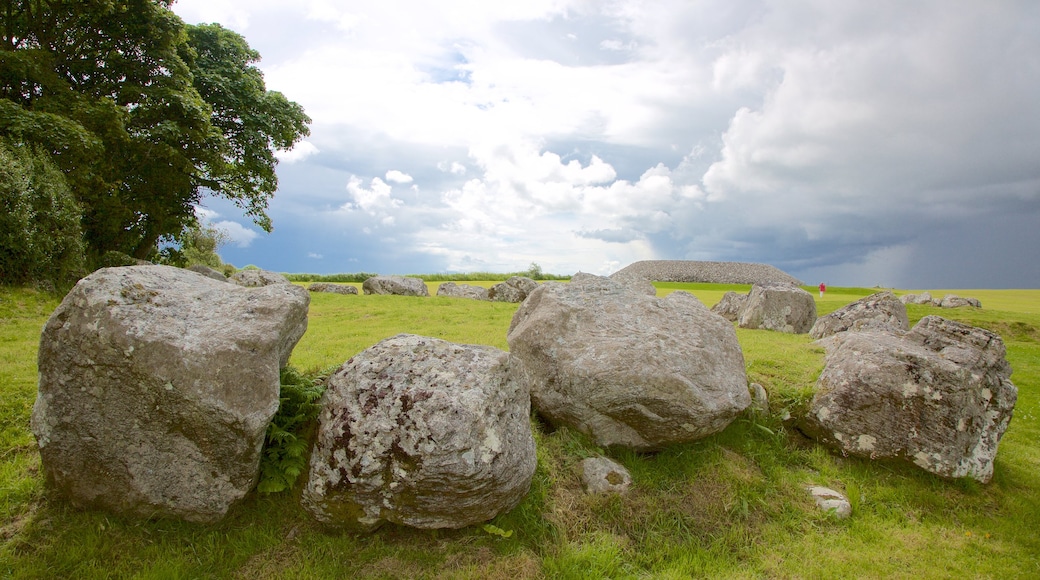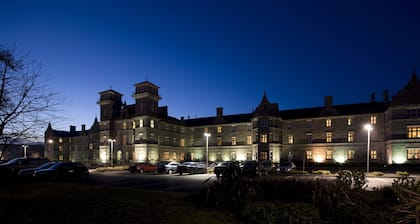Carrowmore Megalithic Cemetery is a complex of tombs and stone circles that date back to the Neolithic period. The gneiss-and-quartzite megaliths dotted throughout these lush fields in County Sligo were constructed into passage tombs over 5,500 years ago. Learn about the rituals and cultural traits of prehistoric humans and explore the fascinating archeological site, one of the largest of its kind in Ireland.
Begin your visit to the Carrowmore Megalithic Cemetery at the site’s restored farm cottage and interpretive center. The cottage houses a small but informative exhibit that details the known history and archaeological timeline of the cemetery. Find out about the region’s ritual significance and how archaeologists believe the region’s prehistoric inhabitants once lived. Observe 30 monuments still visible in this area today. The immense cairn over Tomb 51 or Listoghil is more than 110 feet (34 meters) in diameter.
Stroll into the grassy pasture and find the breathtaking rock cairn, which has been restored after partial destruction in the 19th century. Listoghil’s colossal mound of stones houses a box-shaped tomb within a central chamber. Wander into the chamber and check out the tomb’s megalithic stones. Constructed about 3500 B.C., the tomb appears to be the focal point around which the cemetery was built.
Find fascinating satellite tombs dotted around the site. Known as passage tombs, these megaliths were surrounded by stone circles and positioned around the main tomb of Listoghil. Look southeast to see the skyline defined by Ballygawley Hills, three rolling hills, each with a megalithic tomb.
Carrowmore Megalithic Cemetery and its visitor center are located in Carrowmore in County Sligo. Access the site between April and October for a small fee, which includes admission to the exhibit. Pick up a brochure for a self-guided visit or join a 1-hour guided tour. The visitor center has an on-site parking lot and restrooms. It is less than a 10-minute drive from central Sligo and is located on a local bus route.













